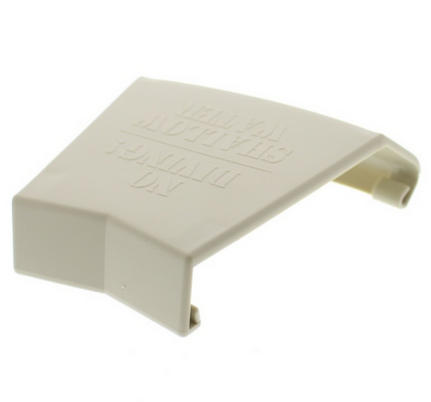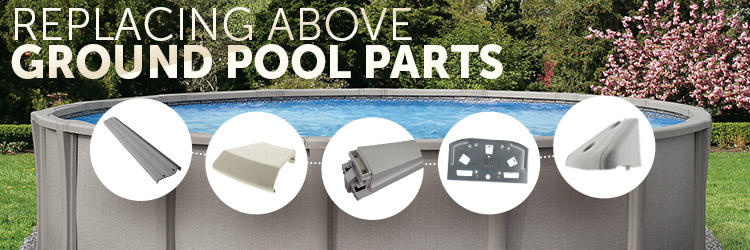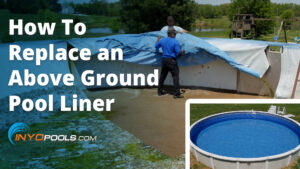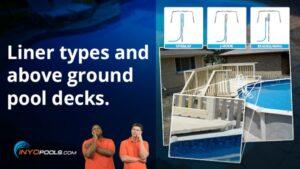Hello and welcome above ground pool owners to the (sometimes) not-so-wonderful world of above ground pool replacement parts. I do not want to sound like a Debbie Downer but it can be hard to ID and track down parts for your beloved above ground pool. Owners of Vogue and Atlantic models will be the first to tell you that tracking down bottom rims for a 15 year old pool has the fun factor of a root canal.
The similar design and build material of pools provide a list of “Most Wanted” parts likely to be replaced over its lifetime. If you have inherited an above ground pool or are just looking to educate yourself, we will run through a list of the most commonly replaced parts. We also want to give you an idea of the function of each part within the pool design. The components of a pool also vary in material according to the pool grade so we’ll include an explanation of the three main build materials of pools and their relative durability.
Bottom Rims
A pool’s bottoms rims may be the most commonly replaced part on our list. The rims are the bottom linkage arm between the upright bases. This vital part is likely to deteriorate due to it being steel which is installed in-ground. The rims are exposed to standing water, lawn care chemicals and dirt leading to decay. Why a manufacturer would design a steel part to be pressed into bare ground, likely exposed to constant wet conditions and expect it to last for years, is over my head. It seems more like planned obsolescence than sound design, but I digress.

Obviously these parts are prone to rust and break apart because of metallic oxidation. Though the rims are made of galvanized steel, that will only go so far when faced to constant barrage of the aforementioned elements. I have seen some rims so badly worn that they crumble to dust once they are handled. The good part is that the bottom rims are also available in resin versions but they are always more expensive and will not retrofit to steel bottom rims pools.
So you may ask, why are bottoms rims so important to my pool? As usual, great question. The bottoms rims are the channel guide in which the steel wall sits. This channel helps provides shape for the pool as well has a sturdy foundation for the wall. Without the rims the wall has a likelihood of bowing, leading to a possible wall failure. Needless to say, wall failure is the very last thing you want unless you like cleaning flood damage.
Top Cap

The top cap is a decorative and protective facade cover meant to jacket the upright’s top plate. Among the parts on our list, the top cap is the most likely to simply go missing. The part is generally not screwed to the pool but instead snapped to the top ledge. Because of this they tend to fall off after a few years. After they have fallen off a few times, some pool owners do not bother to reinstall or the family dog has their way with it.
The cap itself is not intrinsically important to the pool’s structural integrity. Its main duty is to protect critical joint parts (i.e. top plates) from the elements and prying hands. Kind of like a vehicle’s hood, a car can drive without it but the uncovered motor is more likely to rust and eventually fail.

Let us not forget about the Top Cap Supports which act as a buttress and a decorative accessory to the top cap joint. These supports provide a base for the top cap to add stability to the top cap. Their design also provides a fuller molding of the top cap to wall face. Not all pools are designed with top cap supports so do not panic if they are not on your pool. Straight and Curved are the two types of top cap supports; oval pools use a combination of both while round pools strictly the curved style.
Top Ledge
Also known as that thing your kids jump off of into the pool (by the way, not recommended.) The top ledge is more than a step for your daredevil 8-year-old; it is part of the safety, structure and aesthetic design of the pool.
The top ledge is a 5 – 8” wide plank made of steel, resin or aluminum that spans the wall’s top edge between uprights. A top cap snaps to each end of the ledge to cover each upright section. The purpose of the ledge is to hide the top rims and wall edge (surprisingly sharp) from swimmers whilst entering and exiting the pool. The ledge also acts as a mooring point for securing pool steps, railings and ladders.
There is no set time for top ledges to last on a pool. A lot has to do with the material the ledge is constructed of; aluminum will last the longest, then resin and steel brings up the rear. Even with weather coating, steel will rust from rigorous use that can scratch it coated surfaces to reach the raw metal. If your pool is salt water or you are considering a switch to it, forget about it. Salt water will oxidize the steel top ledges faster than your wallet can replace them.
Top Plates & Bottom Plates

I would liken the top and bottom plates to that of your knee or elbow in that they are the main joint of each limb of your pool, the upright being the limb. The top and bottom plates are the joining pieces that meet the two wall rims, upright, and top ledge. Each section of wall depends on the sturdiness of this little plate to keep it in line.
A chain is only as good as its weakest link and a pool is only as good as its rustiest bottom plate. A big burden is put on these two connecting parts and if it is not in good condition an upright assembly can give way. A failed upright turns an above ground pool into an on-the-ground flood.
Upright
Yes, you guessed it, it keeps the wall upright. We are learning too quickly! Uprights are the vertical posts ringing the pool every 4 – 5 feet. They provide a link between the top and bottom rims set as well as secure the wall. Uprights are usually steel but on the higher end pool models are made of resin and aluminum.
The common demise of these parts are the classic rusting of steel parts but also can break due to stress. Breakage is probably caused by an uneven dispersal of weight on the upright which results from a domino effect of other parts within the pool placing burden on the upright.
The Material
Steel
Galvanized steel was the industry standard in above ground pools for decades. For the most part it has the lion’s share of pools being produced today. It is inexpensive to produce and fabricate into modes making it ideal for entry level and economy pools. The downside of our sturdy friend is that even with weather coating and galvanizing it may rust. When your bottom rims or even walls begin to rust, I would start searching for the factory warranty papers. Steel is the most likely to be replaced of the three pool materials.
Resin
This is a high impact plastic that eliminates the possibility of a rusting pool frame. It is considered a relative “New Kid on the Block” since it has grown in popularity only in the last decade. Initially the cost of production made the price prohibitive to pool owners. Resin is also the preferred choice for homeowners wanting the option of saltwater generators. Though resin is used for all the parts, the walls are fabricated from galvanized, weather coated steel. For example, our Matrix resin pool is all resin is top to bottom except for the steel walls. This is because there is just no beating the reliability and sturdiness of steel in this sheet form.
Because of resin’s higher cost, manufacturers offer it in “hybrid” designs. This mix of resin and steel components keeps the price affordable for the average homeowner. The idea is to use resin on the more vulnerable parts like the top ledge and the bottom rail; while using the less expensive steel on low impact parts. In hybrid pools, steel is usually found in the uprights and its stabilizers An example of our Hybrid pools take a gander at our Heritage, Venture, and Opera.
Aluminum
High rollers only, please. For the discerning prospective pool owner, this is the Cadillac of above ground pools. If you plan on using the pool for a couple decades then this would be the choice for you. The most expensive on the list is also the most durable owing mostly to the natural rust resistance and strength of aircraft grade aluminum.
If your plan is to partially submerge your pool into the ground, aluminum is the only way to go. The extruded metal is the only material strong enough to hold up to both the water pressure pushing out and dirt pushing on the wall. For an example review our Bermuda Aluminum Pool.
For any more information regarding above ground pool consult our above ground pool section, pool comparison video or give our techs a call. We can be reached at 877-372-6038.
If you need to identify a specific pool model, check out our article titled Identify My Above Ground Pool. Or, email us at agparts@inyopools.com













Leave a Reply